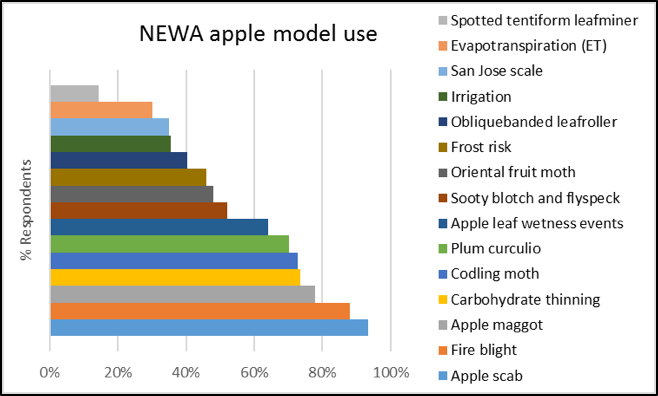This is part five in a five-part blog series discussing 2017 NEWA survey results of users and non-users. Download the full report to learn more.
By Dan Olmstead and Julie Carroll
“I would suggest NEWA be a part of any subsidized agriculture. I would like to see the NEWA network as a standard tool of ag…”. – 2017 NEWA user
Survey participants self-identified as NEWA users were asked to share final comments regarding NEWA and ways the platform could be improved in the future. Of the 71 people responding to this question, 23 (32%) stated that NEWA was excellent and thanked us for NEWA. For detailed analysis, download the 2017 NEWA survey.
Future directions
Results of the 2017 NEWA survey contain a trove of data and information. Final recommendations, based on this information include the following points of importance.
Education and promotion
- At workshops and conferences, promote the high level of trust and reliability growers have in NEWA to categorize pest risk and provide IPM recommendations.
- Raise awareness among growers that using NEWA can result in better spray timing, significant savings on spray bills, and improved crop protection.
- A promotion and awareness campaign for NEWA vegetable models and extension education on how to use them is needed, because vegetable production is significant throughout NEWA’s region — however, reported usage is low.
- A coordinated effort is needed to develop online educational resources for new and existing NEWA users that can be used independently and in workshops and presentations.
- A well-executed awareness campaign can reach new audiences and should bring new users to NEWA resources, and encourage them to start using the platform.
Future development
- To expand and enhance NEWA, focus on and recruit future development in the areas of vegetable, ornamental, and field crop production and pest forecast models.
- Because NEWA weather data products are valued and accessed by all users, develop innovative weather products to attract future NEWA users.

